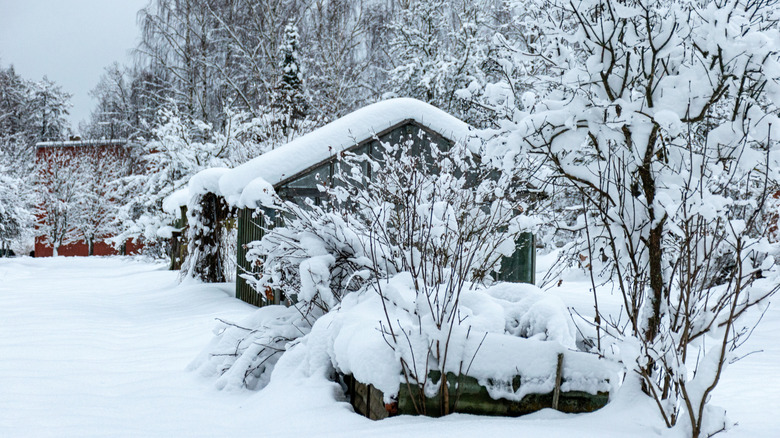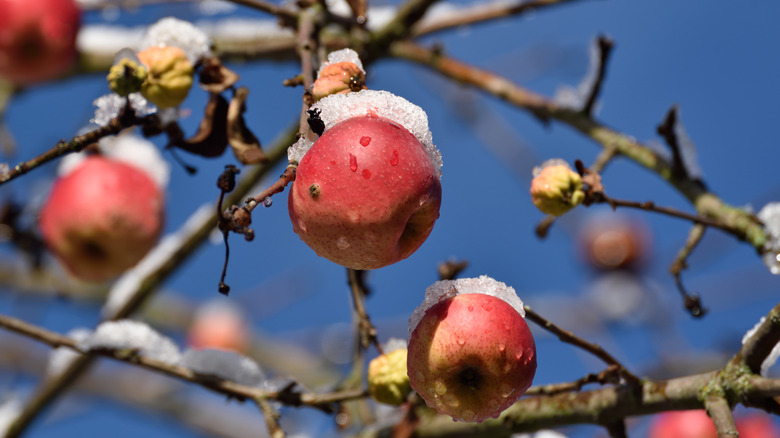The Best Fruit Tree To Grow In The Winter
You might be tempted to put your gardening gloves aside as winters slowly snuggle up, since a number of your plant buddies hit dormancy during this time as well. Winter, indeed, is a time to rest and conserve energy, but it is also a crucial phase that supports the healthy development of a number of plants in the following spring. Fruit trees, especially, benefit a lot from low temperatures before they bear fruit, and apple trees, in particular, are probably the most popular of them for growing during winters.
Apples (Malus domestica) are especially suited for growing in winters because of their requirement of a dormant period for bearing fruit. Apple trees need to experience around 1,000 hours of temperatures below 45 degrees Fahrenheit to grow the optimum quantity of fruits during spring. If they don't receive these chill hours, their yield can also suffer from lack of size or quality. Furthermore, a cold period also prevents apple trees from growing buds too early, when the outer conditions are still very unfavorable for growth.
Growing apple trees the right way during winters
The ideal time to grow an apple tree falls in the period from November through to March. Fall is especially suitable for planting, since the trees can also get enough sunlight and other resources before winters set in. But you can plant apples late in the winters as well if weather conditions in your zone are optimum. In fact, depending on the USDA Zone as well as the number of chill hours needed by the cultivar you have chosen for planting, you should adjust this time accordingly. For instance, if the winters in your area are quite harsh, you might be well off planting the tree in February. In such areas, you should also be careful to choose an apple variety that will grow and do well in a cold climate.
Nonetheless, apples are generally highly accustomed to growing in colder climates and are hardy through USDA Hardiness Zones 4 to 9. They can grow in most well-drained soils (with pH between 6 to 7) and require an inch of water a week from March to October. Make sure that the soil where you plant your apple is not frozen. You also need to ensure that the entire region is unaffected from frost and well-ventilated. Apart from these factors, since your apple tree is going to need some space once it grows, make sure the area is not overly crowded either. Keep in mind that a lot of all apple trees are not self-fruitful and might need a pollinator to bear fruit.
Protecting your apple trees in the winter
Although apples are highly cold-tolerant, you still need to protect your tree from the harsh temperature fluctuations that happen during winters. While there are a number of tips and tricks to help your apple trees thrive, one way to do this in the winters is to wrap your tree with burlap. This will protect the tree trunk from the damaging frost. Furthermore, you can also consider planting your tree on tilted ground to save it from the vagaries of cold winds or freezing rain. This is especially helpful when the tree is still young. You should also keep your trees safe from animal damage with the help of tree guards. These guards do not just protect the tree from pests but also avoid sunscald, which usually happens when temperatures fall and rise in a short period of time.
Mulching is also highly beneficial for your apple tree's roots during the winters. Adding about 2 to 4 inches of mulch will help insulate the roots and conserve moisture in the soil. Applying a mulch during winters also makes sure that weeds, or other grasses that can compete with your tree for resources, don't grow around the tree.


